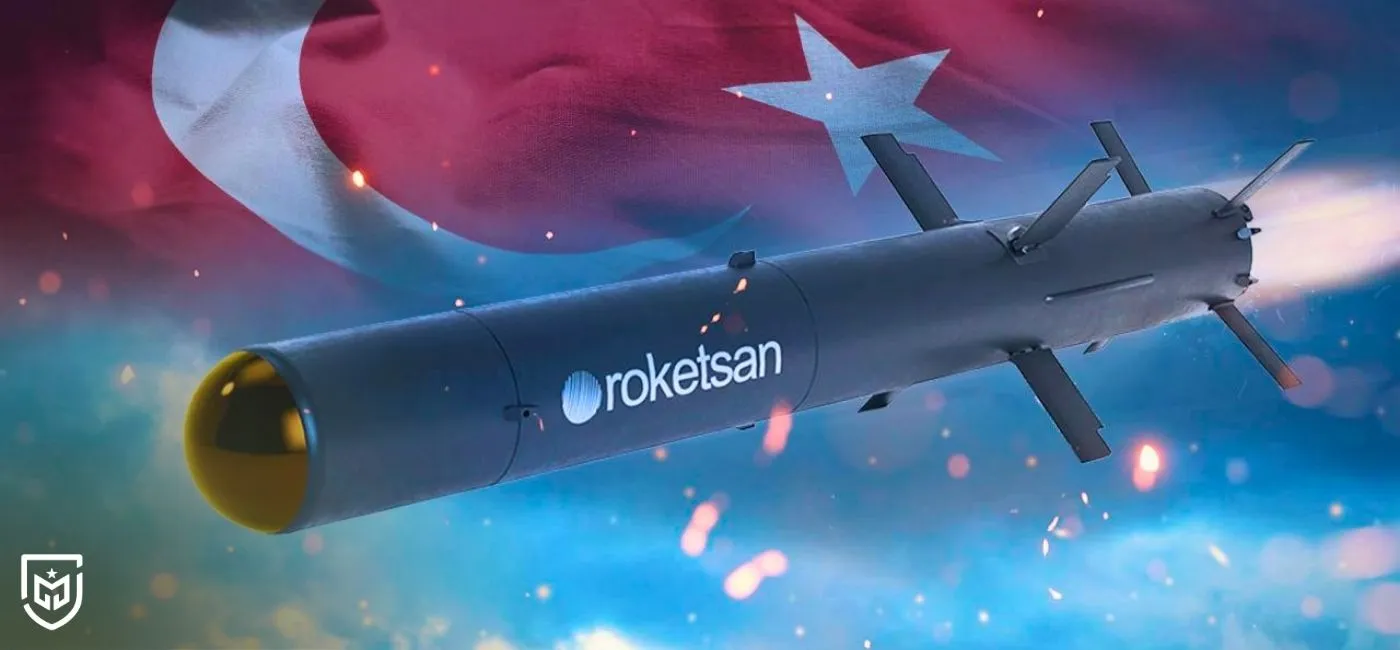

BREAKING NEWS

A test clip released by Roketsan at the end of 2024 has drawn attention to the exceptional flight and engagement profile of the Karaok shoulder-launched antitank guided weapon. Unlike typical long-range strikes, the footage shows the missile engaging a very short-range target — roughly 50–60 meters — by climbing and then executing a steep diving attack onto the target. Performing such a maneuver while the motor is still burning is technically demanding and points to mature guidance, sensor and flight-control algorithms.
Karaok emerged from Türkiye’s TEKAT initiative to field a one-man-portable, easy-to-use antitank system after the development of heavier families like UMTAS and OMTAS. Although its maximum range reaches approximately 2,500 meters, what makes Karaok notable is its flexibility: it can operate effectively in confined urban spaces, under canopy or from defilade positions, and perform top-attack profiles that strike vulnerable upper surfaces of armored vehicles. These capabilities make it especially useful for ambushes, close urban fights and operations from concealed firing positions.
Experts emphasize that Karaok’s combination of lighter weight and advanced optics/sensors gives it an edge against some established systems. Compared to well-known peers such as the Javelin, Karaok is reported to be lighter while offering competitive or superior seeker performance; against South Korea’s Raybolt it presents different trade-offs in maximum and minimum engagement ranges. Roketsan’s demonstration therefore reinforces Türkiye’s growing competence in guided-munition design and integration.
Still, tactical realities demand both high-end guided weapons and large quantities of low-cost rockets. Analysts and industry voices stress the next necessary move: fielding inexpensive, unguided or semi-guided light rockets that are extremely cheap and widely distributable to meet the attrition-heavy nature of modern battlefields. Roketsan’s Karaok shows what advanced Turkish engineering can achieve — the forthcoming challenge will be to pair that sophistication with mass-producible, cost-effective anti-armor solutions.
Post Comment
Comments
No comments yet.
Related News
U.S. MQ-28 Test Overshadowed by KIZILELMA’s Historic Air-to-Air Missile Success
Ukraine Officially Receives Homegrown Flamingo Long-Range Cruise Missiles
Historic Leap in Turkish Defense: KIZILELMA and Skydagger Set New Milestones
Bayraktar KIZILELMA Becomes the World’s First UAV to Hit a Jet-Powered Target with a Beyond-Visual-Range Air-to-Air Missile
Land News, Missile and Rocket Systems, Electronic Systems, Naval News, Satellite and Space News
Türkiye’s Ramjet Breakthrough: Indigenous Engine Test Places Nation Among a Select Few
Top Marks from U.S. Firearm Experts: Sarsılmaz and Its SAR9 Series Take Center Stage in American Media
Bayraktar KIZILELMA Locks Onto F-16: Historic Simulated GÖKDOĞAN Test Achieves Direct Hit